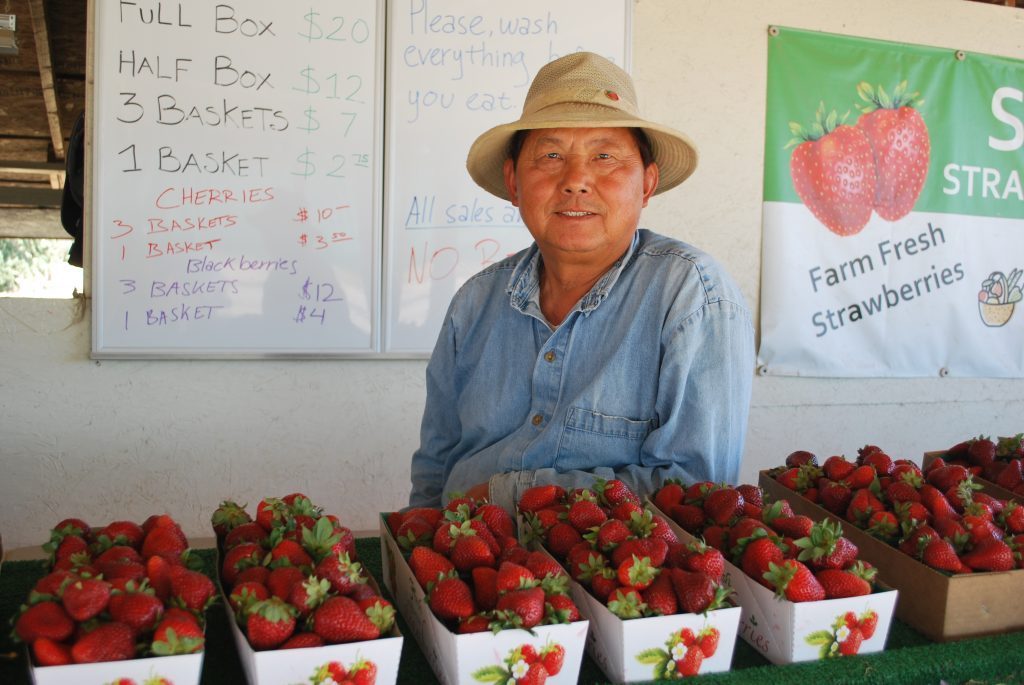
Many farmers like to sell part of their crops at roadside stands and local consumers seem to enjoy shopping there, but the growth in that practice has leveled off. Promotion of locally produced food by supermarkets is saving some shoppers a trip to the countryside.
That is at least part of the conclusion drawn by two researchers at the University of California, Davis, to the great desire of many consumers to provide locally produced food for their families. The report with their research appears in the September-October issue of the university’s Agricultural and Resource Economics (ARE) Update.
ARE Professor Kristin Kiesel and PhD student Ashley Spalding report that some of the strongest support for shopping at roadside farm stands comes from low income families. They understand that freshness, taste, and variety in locally grown produce items can be found there, usually at prices below those displayed at their neighborhood supermarket. But many supermarkets are responding to the obvious preference for locally produced goods by including them in packaged and wrapped food items and announcing their presence clearly on the labels.
The authors of the report indicate that farmers in the direct sales mode can expand their volumes by integrating vertically, growing, storing, processing, marketing and distributing to consumers who are willing to pay more for the foods they display. Any of those options can be big steps (investments) for farmers, even though they promise bigger returns than volume sales to packers, handlers, processors, even direct marketing through middlemen.
The report in Update suggests that the “magic” in the word local can be transmitted effectively with active promotion, especially to the local audience. Farmers who have done so seem convinced that a promotion program of some kind increases sales. Of course, the availability of suitable newspaper, radio, television, signage or special events is not always within reach or within a seller’s budget.
Kiesel and Spalding consulted with the group of local producers in Solano County who identify themselves as Solano Grown, an identity already established. They suggested widening its reach through expanded use of signs and by inviting those nearby to visit Solano County to see for themselves the farm products produced and displayed for sale. They call attention in the report to the use by the European Union of labels that give small producers access to the marketing potential of recognized brands defined by geographic origin and quality standards.
Further they refer to a comment by writer Wendell Berry, a food activist and farmer as well, who said “Eating is an agricultural act.” He explained that he was stressing the importance of consumers knowing their place in the agricultural value chain.
The university authors believe that regional brands can provide this much-needed context more so than local labels standardized by a mileage-based definition. “Knowing how, where and by whom our food is produced matters more than how close to the product’s origin we take a bite,” they conclude.
The trend to emphasize locally produced food in family meal planning appears to be as strong as ever, but obstacles are persistent. Adjustments that might help accelerate the trend have been implemented on a limited basis, and are available to suppliers who want to expand and possibly enter areas of treatment and distribution that are new to them.
Like many trends in many areas the movement to include more locally produced food is strong. Farmers and consumers alike can take advantage of it, but some adjustments and investments are likely to be required. Local won’t move any closer on its own.









